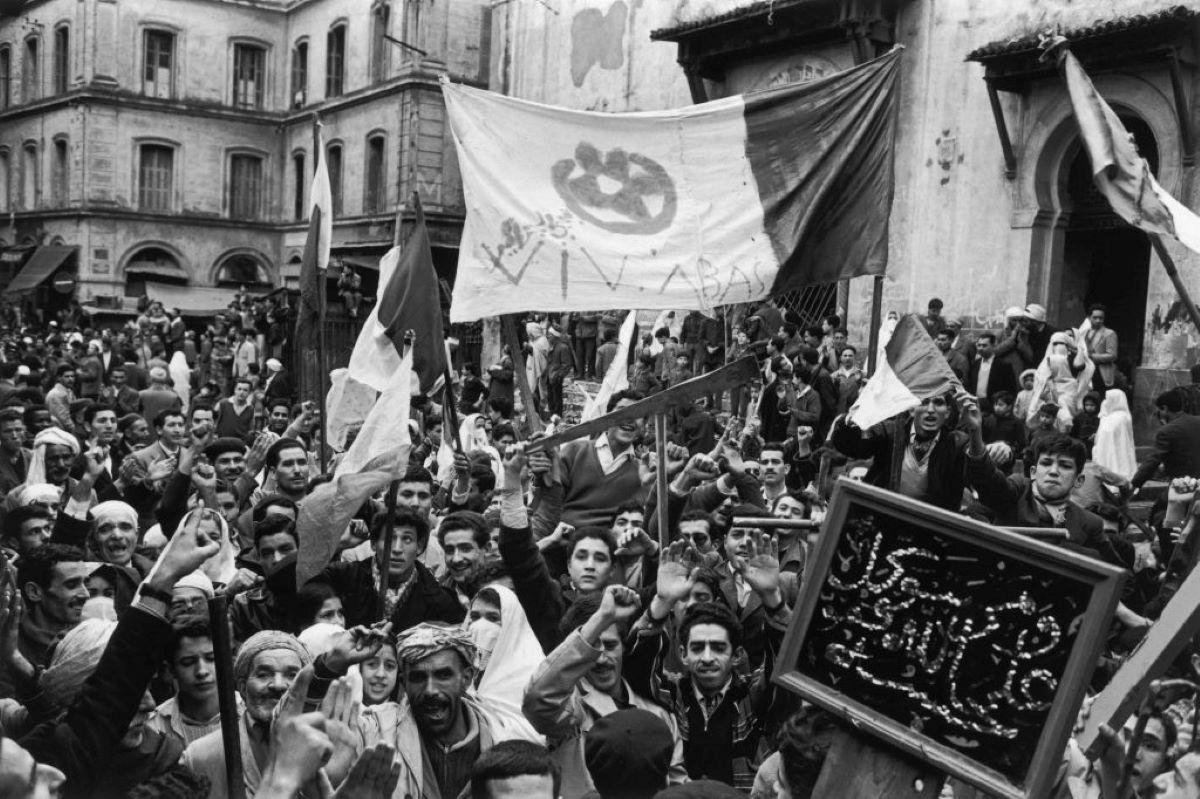Fictions of the Forgotten
Unearthing French Colonial Massacres through Contemporary Francophone Art
In the histories of French colonialism, silence often speaks louder than fact. Archives disappear. Witnesses are silenced. Testimonies are buried under decades of censorship and state-sanctioned forgetting. But in the gaps left behind, literature, film, photography, and graphic novels begin to speak, insisting that the past is not past, and that memory is a political act.
This is the core of a new special issue of Nouvelles Études Francophones, forthcoming from the University of Nebraska Press, for which the editor is Taïeb Berrada, associate professor of French and Francophone Studies in the Department of Modern Languages and Literatures. Focused on French colonial massacres, it gathers a cohort of scholars who examine how contemporary Francophone cultural production reconstructs, reimagines, and resists historical silences.
This special issue moves across continents and mediums. One article tackles the erasure of native voices in the Pacific; another examines violent memory in Caribbean contexts. Contributions also focus on Madagascar and Cameroon, whose histories are too often sidelined in broader discussions of colonial violence. Though diverse in geography, all these pieces share a common urgency—to counteract the institutional forgetfulness that colonialism so carefully engineered.
Berrada contributes an article to the issue, which centers on the 1944 Thiaroye massacre in Senegal. The massacre remains a painful but under-acknowledged episode. West African soldiers, known as tirailleurs sénégalais, were killed by the French military after peacefully demanding back pay for their service in World War II. French authorities labeled them mutineers. But what the archives suppress, cinema and literature revive. Ousmane Sembène’s Camp de Thiaroye, for example, exposes the racialized betrayal at the heart of the incident, while a recent graphic novel adaptation translates this complex history into a visual language accessible to new generations. Sembène (1923–2007) was a film director, producer and writer who had an international reputation as a revolutionary artist and as the Father of African Cinema for his indigenized filmmaking practice.
This editorial project runs parallel to a broader, long-term book endeavor on which Berrada is working. Tentatively titled French Colonial Massacres in Contemporary Works, it investigates how historical atrocities in Algeria, Senegal, Central Africa, and Madagascar are revisited in postcolonial cultural production. Drawing from Michael Rothberg’s theory of multidirectional memory, he examines how literary works create intertextual conversations across time and space—how a how a committed testimony by the novelist Jean-Luc Raharimanana on Madagascar's 1947 insurrection might echo how a contemporary novel rewrites France’s 1830 invasion of Algeria through a gendered lens.
One chapter focuses on Assia Djebar’s Fantasia, which reimagines the French conquest of Algeria by foregrounding women’s resistance and bodily sacrifice—an approach that questions not just colonial violence but the very language through which we narrate it. “In Fantasia, she basically rewrites the story of the 1830 conquest of Algeria by the French,” Berrada says. “She shows the way women had a significant role during that invasion, the initial invasion in 1830.”
Another chapter returns to May 8, 1945—a date globally remembered for Nazi defeat, but also the day French troops massacred Algerian protesters in the towns of Sétif and Guelma. Here, fiction becomes an alternative archive, as seen in writer Kateb Yacine’s haunted recollections which capture the dissonance of national celebration and colonial brutality. On that day, as France celebrated victory over Nazi Germany, colonial forces massacred 45,000 Algerians demanding independence. France has offered only token gestures—no national recognition or apology. The brutal repression, meant to silence dissent, instead fueled Algeria’s fight for freedom and exposed the hypocrisy of French colonial rule. The massacres of Sétif and Guelma marked a turning point, igniting widespread support for Algerian independence.
“I will also be looking at this movie called Heliopolis. To my knowledge, it's one of the very few movies that would focus only on those events that happened. I'll be looking also how the film depicts, how it represents those massacres. What is the role of the French? How do we talk about something when we don’t have witnesses who are alive and who could tell their story. There is that fictive part, but that fictive part is very important to understand what actually happened because of censorship inflicted by the French. That silence that lasted for decades. This is what literature can do, what fiction, what film can do to make us understand certain events that are porous and that have a lot of missing documents, and of course, also a lot of censorship.”
Elsewhere, Berrada traces the French military expedition of 1898 across Central Africa, an episode whose terror rivals Joseph Conrad’s Heart of Darkness, he notes. Though barely chronicled in French state records, it reemerges in African novels and films that reframe it as a story not of “civilization,” but of calculated genocide and resource exploitation.
“They went from Dakar to Lake Chad, and along the way they were using villages, they were just killing everybody. It was just so deliberate and so brutal, and it was in the name of the French expansion and the glory of colonial expansion. I worked on the French novelists’ versions, and I also reviewed certain films and novels that were made by Africans. I use that multidimensional memory to compare how fiction and history differ. Understanding fiction is important, because censorship, destruction of archives, and disappearance of documents, left so many gaps in history.”
While the special issue takes a broader approach—encompassing the Pacific and Caribbean—Berrada’s book project remains firmly grounded in Africa. Still, both works are sparked by the same question: what happens when history refuses to remember, but art refuses to forget? Colonial massacres do not end when the violence stops, Berrada notes. They persist in silence, in denial, in government bureaucracy, but through fiction, film, and visual culture, we find new forms of testimony—ones that speak across languages, genres, and continents. These are not merely works of art. They are acts of memory. And in remembering, they are acts of resistance.

